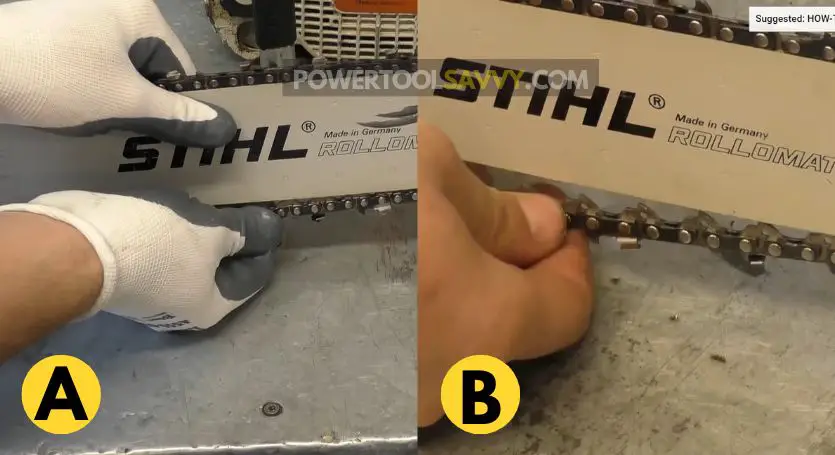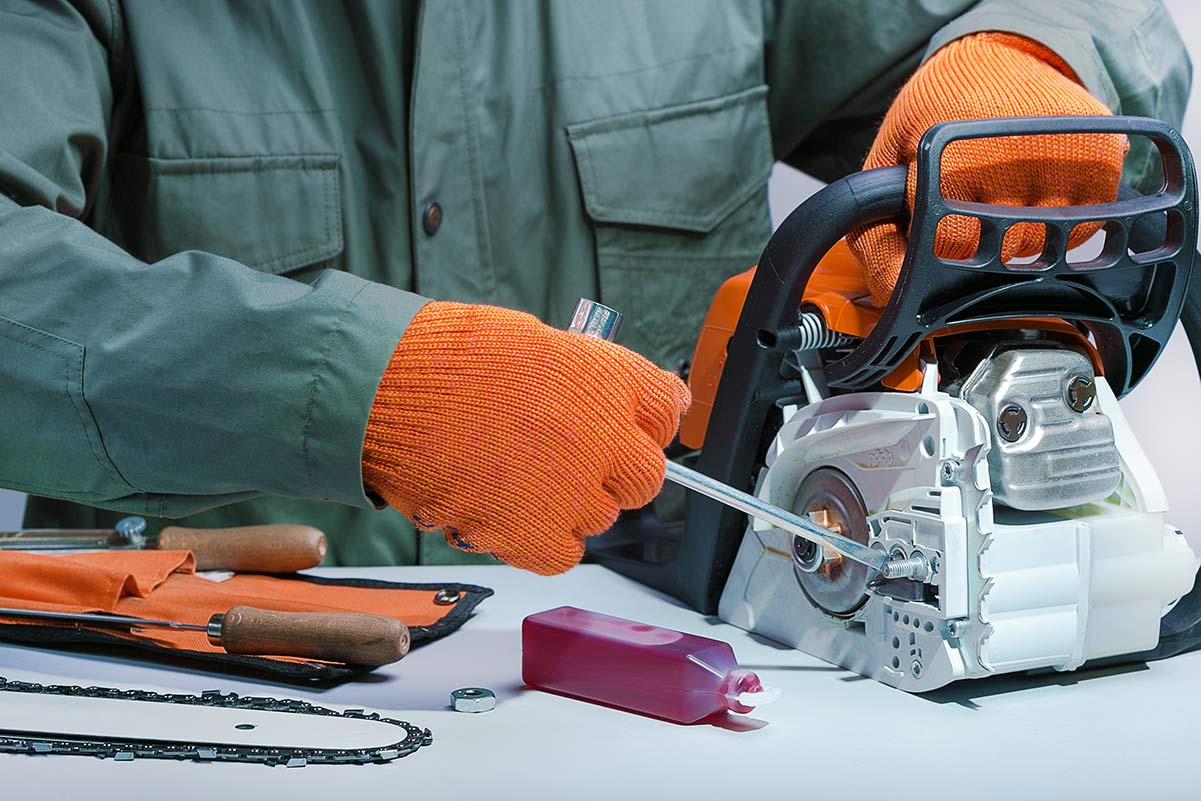The Concept of Chainsaw Chain Stretching
Chainsaw chains, like any other mechanical component, are subject to wear and tear over time. A common concern among users is whether chainsaw chains can stretch excessively, leading to compromised performance and potential safety hazards. Regular maintenance and monitoring are crucial to prevent excessive stretching and ensure the chainsaw operates at its best.
How Chainsaw Chains Function
Chainsaw chains are intricate systems composed of various components, some of which are prone to wear and stretching. The primary components include the drive links, rivets, and the depth gauge. Drive links are responsible for transferring power from the guide bar to the chain, while rivets hold the chain together. The depth gauge, a small piece of metal located on the cutting tooth, determines the depth of the cut and prevents the chain from removing too much material at once.
The Impact of Chain Stretching
Chain stretching can have several detrimental effects on the performance and safety of your chainsaw. As the chain stretches, it may become loose, leading to reduced cutting efficiency and increased kickback risk. Kickback is a dangerous phenomenon where the guide bar rapidly and violently rotates towards the user, potentially causing severe injury. Moreover, excessive chain stretching can cause potential damage to the guide bar and engine, resulting in costly repairs or replacements. It is essential to address chain stretching promptly to ensure the longevity of your chainsaw and the safety of the operator.
How to Measure Chainsaw Chain Stretch
Measuring chainsaw chain stretch is a straightforward process that can be accomplished using either a ruler or a chain gauge. To begin, ensure your chainsaw is turned off and unplugged to prevent accidental startups. Follow these steps to accurately assess your chain:
- Clean the chain and guide bar: Remove any debris or sawdust accumulated on the chain and guide bar to ensure accurate measurements.
- Locate the drive link: Identify the drive link, which is the part of the chain that connects to the guide bar. This link is typically thicker and more robust than the other links.
- Measure the chain: Using a ruler, measure the distance between the center of one rivet on the drive link to the center of the next rivet. Record this measurement.
- Compare to the manufacturer’s recommendation: Consult your chainsaw’s user manual to find the recommended maximum stretch limit for your specific chain model. Compare your measured value to this limit.
- Inspect for wear: Examine the chain for signs of excessive wear, such as dull cutting teeth or stretched drive links. If any of these issues are present, consider replacing the chain.
Regularly measuring and monitoring your chainsaw chain stretch can help prevent excessive stretching and ensure optimal performance. Remember to always follow the manufacturer’s recommendations for chain maintenance and replacement.
When to Replace a Stretched Chainsaw Chain
Determining when to replace a stretched chainsaw chain is crucial for maintaining the safety and efficiency of your power tool. Consider the following criteria when evaluating your chain:
- Exceeding the recommended stretch limit: Consult your chainsaw’s user manual for the manufacturer’s recommended maximum stretch limit for your specific chain model. If your chain’s measurement surpasses this limit, it is time for a replacement.
- Excessive wear: Inspect the chain for signs of excessive wear, such as dull cutting teeth or stretched drive links. If the chain appears worn or damaged, it should be replaced to prevent potential accidents or further damage to the guide bar and engine.
- Decreased cutting efficiency: A stretched chain may struggle to cut through materials as effectively as a new or well-maintained chain. If you notice a significant reduction in cutting efficiency, it may be time to replace the chain.
- Increased kickback risk: A stretched chain can increase the risk of kickback, which can lead to severe injury. If you experience increased kickback while using your chainsaw, consider replacing the chain to ensure your safety.
Using high-quality replacement chains can offer several benefits, including improved durability, longevity, and cutting efficiency. Always consult the manufacturer’s recommendations for chain replacement and adhere to their guidelines for proper chain maintenance.
Preventive Maintenance Techniques for Chainsaw Chains
Proper maintenance can significantly reduce the likelihood of chainsaw chain stretching and ensure optimal performance. Consider the following tips and best practices:
- Proper tensioning: Regularly check the chain tension and adjust as necessary. A loose chain can lead to excessive stretching, while an overly tight chain can cause damage to the guide bar and engine. Consult your chainsaw’s user manual for the recommended tensioning procedure and adhere to the manufacturer’s guidelines.
- Lubrication: Regularly lubricate the chain with high-quality chain oil to reduce friction and heat buildup, which can contribute to stretching. Choose a chain oil specifically designed for your chainsaw model and operating conditions, and follow the manufacturer’s recommendations for lubrication frequency and quantity.
- Cleaning: Regularly clean the chain and guide bar to remove debris, sawdust, and other contaminants that can accelerate wear and stretching. Use a brush or cloth to gently remove buildup, and avoid using high-pressure water or harsh chemicals that can damage the chain or guide bar.
- Sharpening: Dull cutting teeth can increase the strain on the chain and engine, leading to premature stretching. Regularly sharpen the chain using a sharpening file or electric sharpener, and ensure the depth gauge is properly set to maintain the correct cutting depth.
- Storage: Properly store your chainsaw when not in use to protect the chain from damage and excessive stretching. Store the chainsaw in a dry, clean area away from direct sunlight and extreme temperatures, and loosely wrap the chain around the guide bar to prevent unnecessary tension and twisting.
By incorporating these preventive maintenance techniques, you can significantly reduce the likelihood of chainsaw chain stretching and extend the lifespan of your chainsaw.
Popular Chainsaw Chain Brands and Their Features
Choosing the right chainsaw chain can significantly impact the performance and longevity of your power tool. Several popular chainsaw chain brands offer unique features and benefits. Here are some top recommendations based on user reviews and expert opinions:
- Oregon Chains: Known for their durability and precision, Oregon chains are a popular choice among professionals and DIY enthusiasts alike. They offer a wide range of chains, including low-kickback and semi-chisel designs, to suit various cutting applications. Additionally, Oregon’s PowerCut file kit is an excellent tool for maintaining sharp, efficient chains.
- Stihl Chains: Stihl chains are designed for high performance and long-lasting durability. Their chains are engineered to reduce wear and stretching, ensuring optimal cutting efficiency. Stihl also offers a variety of chain types, such as full chisel, semi-chisel, and picco chains, to accommodate different cutting tasks.
- Husqvarna Chains: Husqvarna chains are renowned for their superior quality and innovative design. They feature an advanced lubrication system that reduces friction and heat buildup, minimizing the risk of stretching. Husqvarna offers a range of chains, including low-vibration and low-kickback models, to enhance user comfort and safety.
- Echo Chains: Echo chains are designed for reliability and ease of use. They offer a variety of chain types, including full chisel, semi-chisel, and low-kickback chains, to suit various cutting applications. Echo chains are also known for their excellent heat resistance, which helps prevent stretching and prolongs the life of the chain.
When selecting a chainsaw chain, consider the specific requirements of your cutting tasks, such as the type and hardness of the material you will be cutting. Always adhere to the manufacturer’s recommendations for chain compatibility and maintenance to ensure optimal performance and longevity.
Additional Resources for Chainsaw Chain Care and Maintenance
For further information on chainsaw chain care and maintenance, consult the following reputable sources:
- Manufacturer Websites: Visit the websites of chainsaw manufacturers, such as Stihl, Husqvarna, and Oregon, for detailed instructions on chain maintenance and replacement. These resources often include user manuals, maintenance schedules, and troubleshooting guides specific to their products.
- DIY Tutorials: Explore online platforms like YouTube for step-by-step video tutorials on measuring, maintaining, and replacing chainsaw chains. These resources can provide visual guidance and practical tips for users of all skill levels.
- Safety Guidelines: Familiarize yourself with safety guidelines and best practices for chainsaw use from organizations such as the Occupational Safety and Health Administration (OSHA) and the American National Standards Institute (ANSI). These resources can help ensure safe and responsible chainsaw operation, minimizing the risk of accidents and injuries.
By staying informed and proactive in your chainsaw chain maintenance, you can ensure optimal performance, longevity, and safety. Regularly monitoring and addressing chain stretching is a crucial aspect of responsible chainsaw ownership and operation.







